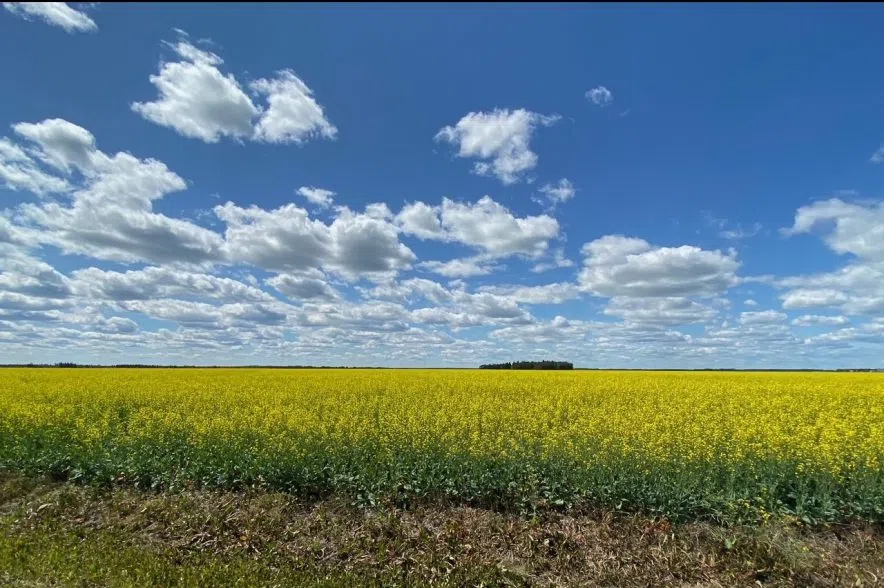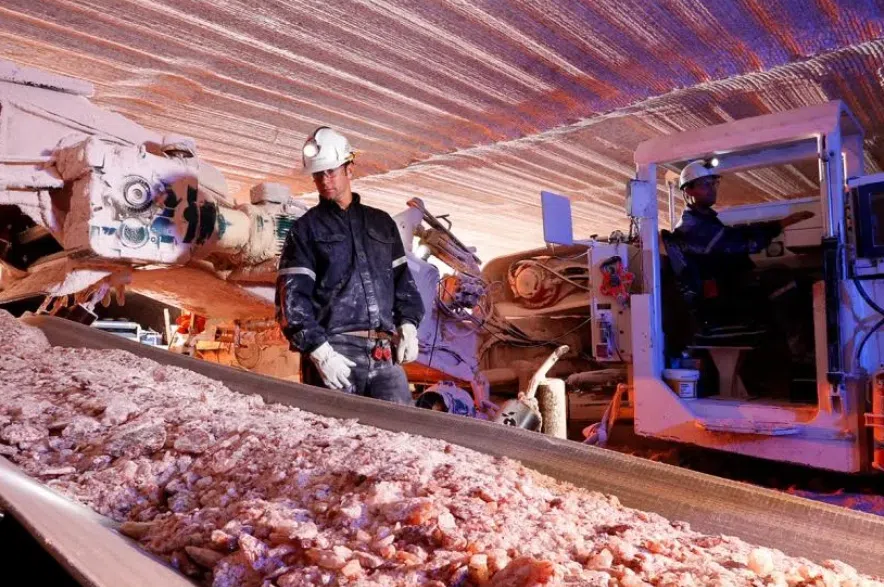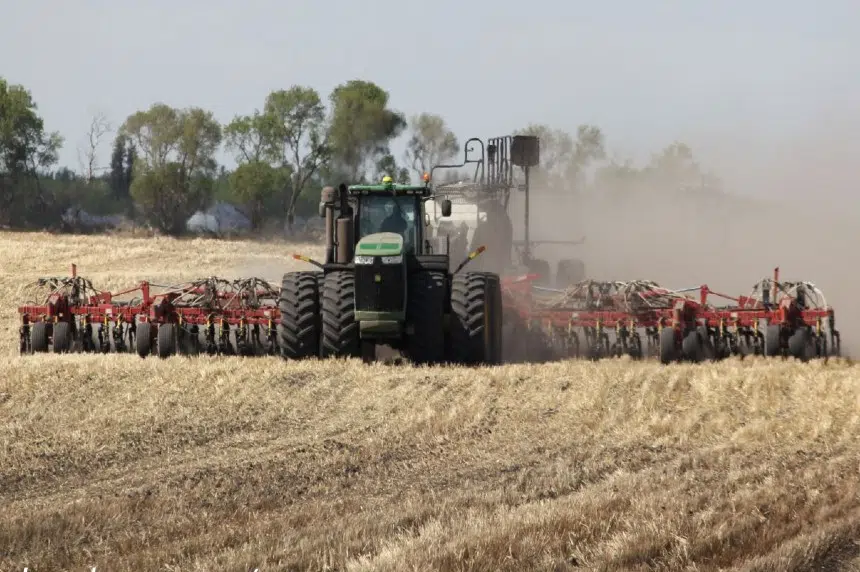Shaun Haney, founder of RealAgriculture, hosts Real Ag on the Weekends on Saturday afternoons from 4 p.m. to 5 p.m. and Sundays from 11 a.m. to 12 p.m on 980 CJME and 650 CKOM.
Here’s a roundup of the Sept. 7 show:
Fallout from canola dispute
Chris Davison president and CEO of the Canola Council of Canada talked to Lindsay Smith of Real Agriculture on Tuesday after China’s announcement it would launch an anti-dumping investigation into Canadian canola and some chemical products in retaliation for the 100 per cent tariffs announced last week by the Canadian government for Chinese-made electric vehicles.
Q: What does an anti-dumping investigation entail?
Chris Davison: Typically, when we’re talking about anti-dumping, that’s when a domestic government imposes tariffs on imports for reasons related to market value. We will support the investigation as appropriate to demonstrate the fair access and competitiveness of Canadian canola.
Q: What does the China canola announcement mean for farmers?
Davison: This isn’t an announcement of any sort of tariff. We are in the thick of canola harvest here in Western Canada. Certainly from the farmer’s perspective, it makes them quite nervous.
Q: What could this mean for grain companies?
Davison: We’re also confident that an investigation into Canada’s canola trade will demonstrate alignment with and reinforce our support for rules-based trade, which I think is really, really important. Certainly farmers and the rest of the value chain want to avoid unpredictability when it comes to access to markets.
Our job has got to be about maintaining or restoring open and predictable market access for Canadian canola. That has to be a priority for us, and that’s what we’re going to be talking about with the membership and the broader industry, as well as engaging with the federal government on how best to do that.
Shaun Haney: It looks like there’s a lot more information still to come to the forefront for us to better understand how all this plays out. Is this something that can be rectified? Who’s making that decision? Is this a decision that’s being made inside China or is this the decision that’s going to go to the World Trade Organization (WTO)?
I think it is very much in Canada’s favour if this is something that is decided by the WTO because it gives Canada a little bit of a more fair shake at talking about the finer points of their position and what’s really at work here.
Another key question is how does the Canadian government react? Do they back off of the 100 per cent tariffs on Chinese-made EVs and the 25 per cent tariff on Chinese-made steel and aluminum?
I’m doubtful of that because not only do we have the government of Canada that has made this decision, the Conservatives are just as in favour of this policy as the Liberals are on this policy.
The longer this dispute goes on, the more the market goes to the downside. Do we start to see some sort of talk more and more about compensation for for growers?
There’s a lot of moving parts here. One of the moving parts is the markets. Chuck Penner of Leftfield Commodity Research said farmers had no need to panic.
Q: What should canola farmers be doing?
Chuck Penner: Everybody has a different amount of canola that is unsold — some have zero and some have probably have sold the majority of their crop. I think farmers need to be patient. I think this has a longer time frame. We’re strong on thinking in terms of seasonal price behavior. We’re at the seasonal lows now.
Do not jump to conclusions. There’s a bit of a long tail here to this. We’ve got to see how Canada reacts. We haven’t seen much of a response at this point — they’ve put out a few platitudes and a few comments. This is all happening over top of a market that’s trying to find some bottom, and stability.
China’s left a little bit of a window here because this investigation is going to take some time. They just didn’t jump to tariffs, they’ve left a bit of an open window here for Canada to maybe reconsider its position.
Fertilizer situation tough going into next spring
Bernard Tobin from Real Agriculture was at the Farm Progress Show in Iowa and had a chance to talk to Chris Meyer from ADM Farm Direct Fertilizer about what is happening with fertilizer prices.
Q: What is farm direct fertilizer?
Chris Meyer: ADM has been the fertilizer business for more than 20 years and about eight years ago started to go to a farm direct model as growers have been looking to source their own products and control the price a little bit.
Q: What is the situation with the fertilizer market right now?
A: Potash has actually probably been at one of the most affordable levels in quite a long time.
There seems to be ample supply, and it’s a decent price for growers.
If we go to phosphates, the United States has a little problem because we’ve got we’ve got and countervailing (anti-subsidy) duties that have made it difficult for us to source nitrogen from many places in the world. The Canadian market doesn’t have those tariffs, but in general those prices have come down as well.
Q: How are the commodity markets and the firm economy affecting fertilizer prices?
A: It’s definitely a conversation we’ve been having a lot more with growers because in certain situations, the numbers don’t work well with the corn prices. Growers need to know
what their fertility levels are, where they can sell their crop, and what makes the most sense. If growers are going to cut back, they need to make sure they are maximizing the yields and return on what you are going to put in.
So much of that is actually knowing what you got in the ground from a fertilizer perspective. I’ve got a lot of folks that have done a good job of fertilizing in the years past and so with the lower prices they are thinking on cutting back a little bit. Things that might throw that off a little is if they have, you know, there’s some areas that have really good crops this year.
Phosphates, growers are a little wary of. They’re watching the markets go in the wrong direction so growers just really to figure out where the break-evens are for next year. In the summer we had some opportunity to lock in phosphate and potash going into this fall and so far they look like those are pretty good choices.
Going into next spring, it’s really tough. When we talk nitrogen, a lot of the guys are telling me that that number doesn’t make sense where it’s at today.
I think a lot of folks are going to wait on phosphates and potash as well. Part of it is the higher interest environment — growers don’t want to have the cash outlay on the farm and pay the interest on that money.
Anhydrous ammonia prices not matching input
Shaun Haney: During the rail strike we were talking a lot about the fact that railways had stopped shipping anhydrous ammonia two weeks before the work stoppage actually happened. There was concerned about getting it onto the ground.
That’s not the only thing that’s kind of been very disruptive to the anhydrous ammonia market. Here is Josh Linville of Stonex Group’s commentary on the matter.
Josh Linville: Who do you think was the largest anhydrous exporter in the world as of about two years ago? Russia.Guess how many tons they’re exporting right now? Zero, because their pipeline to Odessa goes through Ukraine, so that pipeline’s been completely shut down.
Q: Why is anhydrous ammonia more expensive this year than it was last year?
A: Last year’s price was a gift, it was much, much lower than anybody anticipated. When you look at that price versus where the corn was, to your point, it was five plus.
Q: What about the 2025 situation?
A: I think this is one of the most difficult decisions for growers. What do you do about fertilizer now for the 2025 crop that you’re not going to be planting until March, April or May? Typically, this is the time that growers usually make some of those moves. In an ideal world, you would buy the fertilizer, sell some crop, and you’d match a little bit.
The geopolitical side of the fertilizer equation has kept some of those prices propped up. Input prices have not matched that, and that’s really hurting farm profitability in the cropping sector right now.
What is the Ultra Wheat Yield Guarantee and the Ultra SR?
Seedmaster‘s global director Tim Criddle was featured in the following paid product spotlight.
Q: What is the Ultra Wheat Yield Guarantee and the Ultra SR?
Tim Criddle: We’ve had the Ultra S .R. in the market for about five years and have a lot of interest in the product.
The Ultra SR is a revolutionary seeding solution. It’s like a hybrid between an air drill and a planter — you’ve got a single-pass air drill machine that puts down nutrients and seed at the same time, but you get that ultra-pro metering with that seed singulation.
People are looking at it saying, that’s a really cool and that’s going to be fantastic in canola and in pulses but then they run into a mental roadblock when it comes to cereals because it’s at 15-inch spacing.
The fallacy is born on the fact that a lot of the yield data related to row spacing goes back to the 1980s when there were more conventional tillage practices.
For all those customers that are on the fence, that say I want to believe but I’m really worried about yield we have said let’s guarantee it. Let’s put together a wheat yield guarantee.
The way the program is going to work is that a farmer can buy an Ultra SR for a wheat crop planted in spring 2025. The offer is valid for one field up to 160 acres, split 50/50 and we’re going to verify which half out-yielded the other. If the Ultra SR has a yield shortage compared to the other half of the field, we’ll pay the farmer the difference.
We feel like the Ultra SR is incorrectly being shoehorned into being just a canola drill but it’s an everything drill. It’s a tremendously efficient seeding solution. The capital cost is lower than a toolbar and an air cart. Horsepower requirements are lower than pulling a conventional drill. It’s a 60-foot drill, with a 750 bushel capacity. It’s a single pass air drill so farmers can manage their nutrient package at the exact same time as your seeding.
Questions and answers have been condensed and edited for clarity.
Read more













